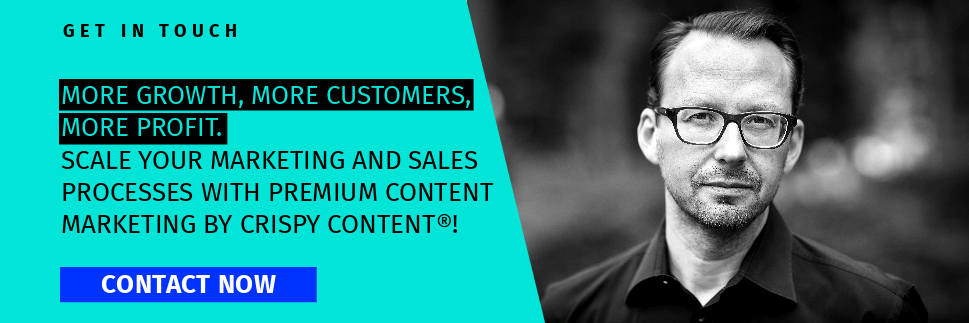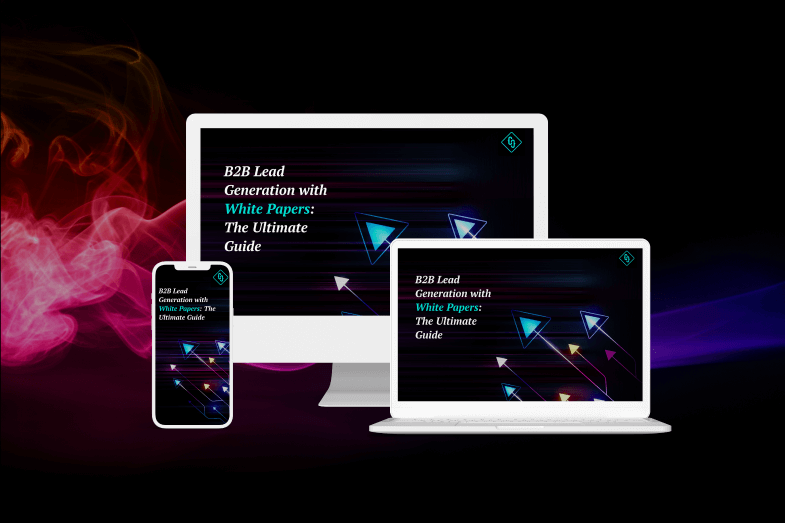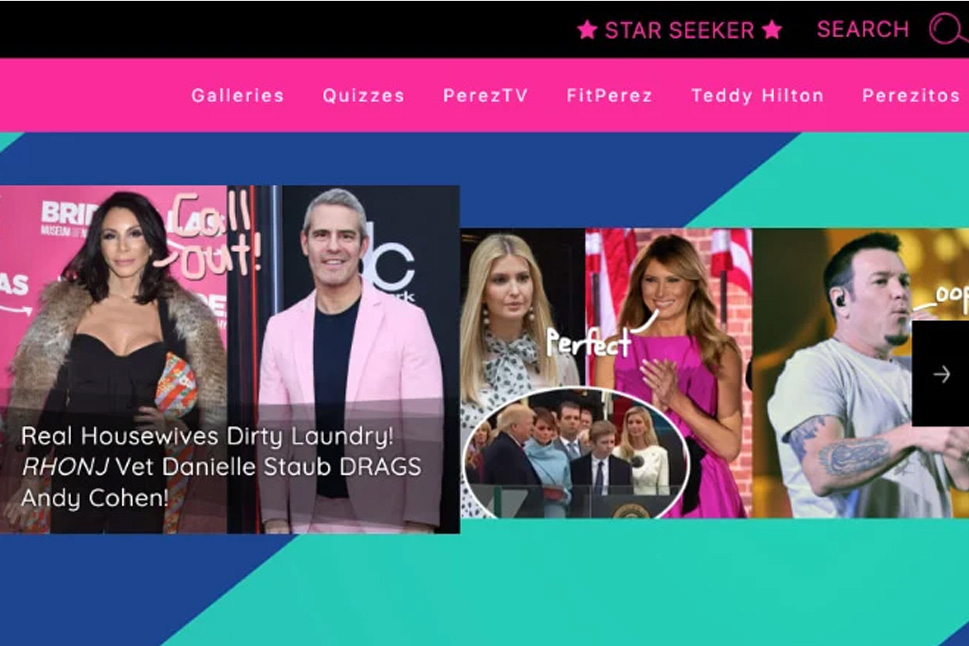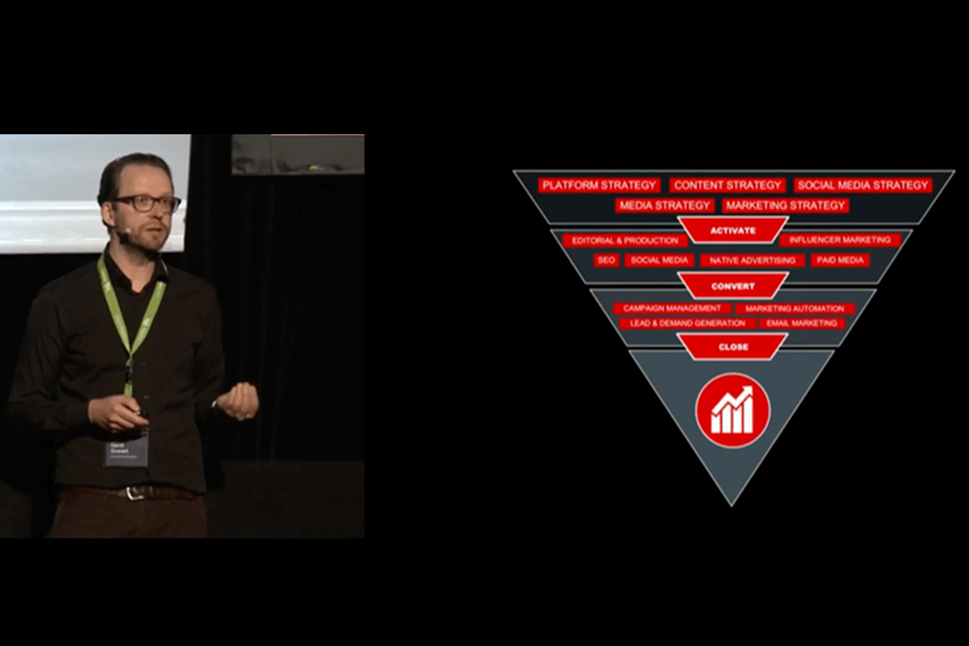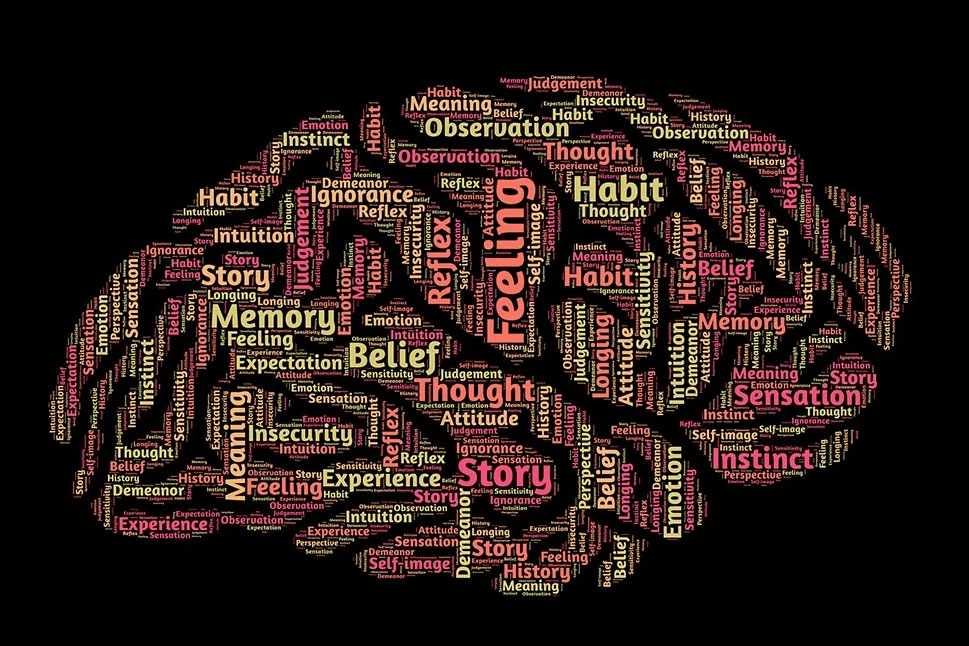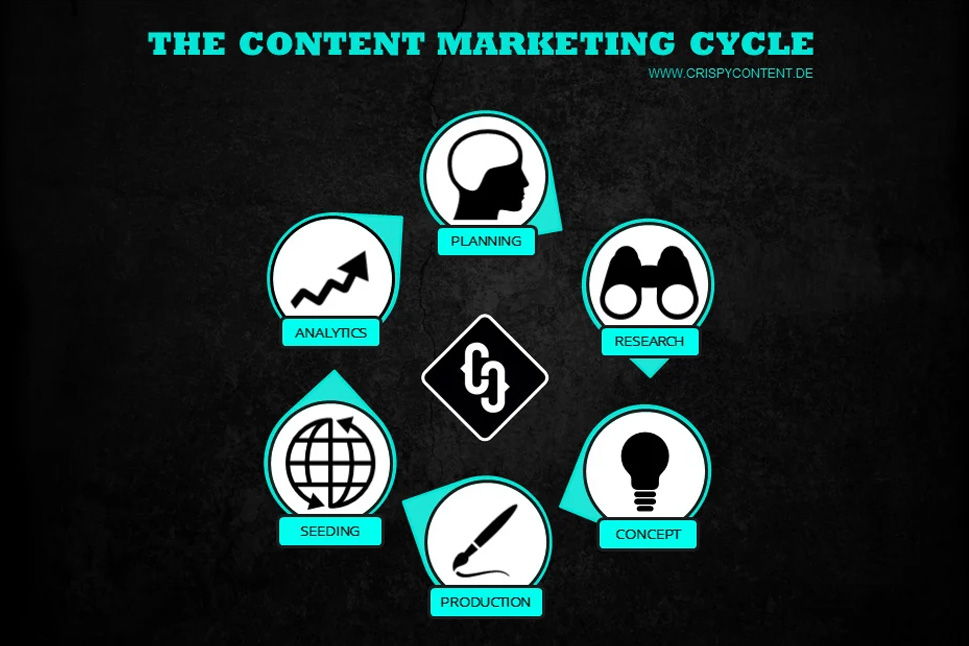Top 5 Criteria for Choosing the Right Content in B2B Marketing
Last updated on January 15, 2025 at 16:04 PM.In B2B marketing, success hinges on understanding your audience and aligning your strategy with their unique needs and behaviors. The content formats you choose can make or break your ability to engage effectively across the customer journey. This blog explores five key criteria for selecting content formats that not only resonate with your target group but also amplify your marketing impact. From tailoring content to diverse personas within buying centers to ensuring alignment with your strategic goals, these principles will help you craft a content strategy that drives meaningful results.

The Top 5 Core Criteria
In the ever-evolving landscape of B2B marketing, success isn’t just about creating high-quality content—it’s about delivering it in the right format to the right audience at the right time. Content formats are more than just a creative decision; they are a strategic tool that can make or break your ability to engage with your target group effectively and drive meaningful results.
Selecting the most suitable content format requires a deep understanding of two critical factors: the unique dynamics of your target audience and the stages of their customer journey. In B2B, these dynamics are often multifaceted, involving multiple personas within a buying center, each with their own roles, responsibilities, and pain points. Likewise, the customer journey is rarely linear, requiring content that can meet your audience wherever they are, whether they’re exploring solutions, evaluating options, or finalizing a decision.
To ensure your content strategy is both impactful and efficient, it’s essential to evaluate your format choices through a strategic lens. The following five criteria serve as a roadmap to guide your decisions, helping you align content formats with your audience’s needs, preferences, and decision-making processes.
1. The Importance of Understanding Your Audience in B2B Marketing
Knowing your audience is the foundation of any successful marketing strategy, especially in the complex world of B2B. Unlike B2C, where the focus is often on individual consumers, B2B customer journeys frequently involve entire buying centers—groups of decision-makers and influencers within an organization. These buying centers are composed of multiple personas, each with distinct roles, needs, and priorities. To engage effectively, your content must address these variations and speak directly to the concerns of each individual involved in the decision-making process.
- Assistants or Coordinators: Often the first point of contact in the buying journey, these individuals are tasked with gathering information and evaluating initial options. They require content that is accessible, practical, and easy to digest—think FAQs, quick-start guides, or straightforward how-to articles. The goal here is to provide actionable insights that make their research easier and position your brand as a reliable resource.
- Mid-Level Managers or Specialists: These personas are typically involved in evaluating the feasibility and relevance of a product or solution for their specific department. They need content that bridges the gap between technical details and strategic benefits, such as detailed case studies, product comparisons, or in-depth blog posts. At this stage, your content should highlight how your solution addresses their challenges while demonstrating measurable outcomes.
- C-Level Executives or Decision-Makers: As the ultimate decision-makers, executives focus on the big picture. They are interested in strategic insights, ROI projections, and how your solution aligns with their organization’s long-term goals. Content aimed at this group must be concise yet impactful, delivered in formats like executive summaries, white papers, or business cases. The message should clearly articulate the value proposition and potential impact on the organization.
By understanding the roles and expectations of each persona, you can tailor your content to address their specific concerns and ensure it resonates at every stage of the customer journey. This personalized approach not only builds trust and credibility but also increases the likelihood of moving prospects through the sales funnel more effectively.
In B2B marketing, it’s not just about what you say—it’s about saying the right thing to the right person at the right time. Developing content formats that align with the diverse personas in a buying center is key to achieving this goal and creating a seamless customer experience.
2. How Subject Matter Shapes Content Format in B2B Marketing
In B2B marketing, the subject matter of your content isn’t just a starting point—it’s a decisive factor in choosing the right format. The complexity, depth, and purpose of the topic determine how it should be presented to your audience. Selecting an appropriate format ensures that your message is communicated effectively and resonates with your target group.
Here’s how the nature of your content can guide your format decisions:
- Thought Leadership: Bold, forward-thinking ideas and innovative perspectives are the hallmark of thought leadership content. These topics aim to spark interest, challenge assumptions, and position your brand as a trusted authority. Given their attention-grabbing nature, short, punchy formats like social media posts, opinion pieces, or blog articles are ideal. These formats allow you to present your ideas concisely while encouraging further engagement through discussions or shares.
- Detailed Insights: When your subject matter involves in-depth analysis, technical details, or comprehensive case studies, it calls for formats that provide enough space to delve into the specifics. Reports, white papers, and case studies in downloadable PDF format are excellent choices. These formats allow you to thoroughly explain complex ideas, showcase data, and offer actionable insights. Additionally, they appeal to audiences looking for substantive resources to inform their decision-making process.
The key is to match the level of depth required by your topic with the right content format. Thought leadership thrives on brevity and impact, while detailed insights benefit from more expansive formats that allow for thorough exploration.
By aligning your content format with the complexity and objectives of the subject matter, you not only improve the clarity of your message but also enhance its relevance to your audience. This strategic approach ensures that your content meets the needs of your target group while effectively supporting your broader marketing goals.
3. Leveraging Channel Strengths to Select the Right Content Format
In B2B marketing, understanding the strengths and limitations of each distribution channel is critical for delivering content that resonates with your audience. Different channels cater to varying content formats, and aligning your approach with these unique characteristics ensures that your message reaches the right people in the right way. Here’s how different channels influence content format selection:
- Social Media: Social media platforms thrive on brevity, engagement, and immediacy. They are ideal for bite-sized content, such as quick tips, industry updates, or thought-provoking quotes. These formats work well for building brand awareness, sparking conversations, and driving traffic to more detailed resources. However, social media’s fast-paced nature and limited character count make it unsuitable for conveying complex or technical information.
- Blogs: Blogs strike a balance between brevity and depth, making them perfect for SEO-driven topics and moderately detailed content. They provide a platform to share insights, how-to guides, or opinion pieces that require more explanation than a social media post can offer. Blogs also serve as a gateway to deeper resources, such as linking to downloadable white papers or case studies.
- CRM: For comprehensive, in-depth content, white papers and reports are the go-to formats. These are often distributed through email campaigns or gated landing pages, where interested audiences actively seek detailed information. These formats excel in delivering data-driven insights, technical analyses, or thought leadership that requires extensive explanation and supporting evidence. Their long-form nature ensures ample space for context and credibility-building.
Choosing the right content format means more than simply matching the content to the channel—it’s about understanding how your target audience interacts with each platform. Consider their behavior: Are they scrolling for quick insights, searching for detailed information, or actively engaging with educational content? Aligning your format to these preferences maximizes your content’s effectiveness and ensures a seamless audience experience.
By leveraging the strengths of each channel and adapting your formats accordingly, you can optimize your content strategy, ensuring that your message not only reaches but also resonates with your B2B audience.
4. Aligning Content Formats with Audience Behavior and Accessibility
In B2B marketing, the way content is distributed and accessed is just as important as the message itself. A great piece of content can fall flat if it doesn’t align with the expectations and behavior of your target audience. By choosing formats that match how your audience consumes and interacts with information, you ensure that your message is both accessible and impactful.
Here’s how different formats cater to varying audience behaviors:
- Interactive Infographics and Videos: These formats are perfect for audiences looking for quick, visually engaging content. Infographics and videos excel at simplifying complex information into digestible visuals and narratives, making them ideal for audiences in the early stages of the customer journey or for those consuming content on-the-go. They are particularly effective for raising awareness, delivering key statistics, or demonstrating high-level concepts in a memorable way.
- Downloadable PDFs and White Papers: For audiences seeking detailed, in-depth information, downloadable resources like PDFs or white papers are the preferred format. These formats cater to professionals who need to engage deeply with the content, often revisiting it multiple times or sharing it internally with stakeholders. They’re ideal for complex topics, technical analyses, or strategic insights that require extensive explanation and documentation.
By understanding your audience’s behavior—whether they prefer quick consumption, in-depth engagement, or collaborative sharing—you can tailor your content formats to meet their needs. This alignment ensures a smoother user experience, enhances content relevance, and increases the likelihood of driving meaningful engagement and business outcomes
5. Aligning Content Formats with Your Marketing Goals
Every piece of content you create should serve a specific purpose, and selecting the right format is key to achieving that goal. In B2B marketing, where objectives can range from building awareness to driving conversions, matching the format to the desired outcome ensures that your efforts are both focused and effective.
Here’s how content formats can be tailored to different marketing goals:
- Lead Generation: When your priority is capturing leads, gated content such as white papers, webinars, or in-depth guides works best. These formats provide high-value information that motivates users to exchange their contact details. Webinars, in particular, offer an interactive element, allowing you to engage directly with prospects while showcasing your expertise.
- Brand Visibility: If the goal is to increase brand awareness, snackable content like social media posts, short videos, or blog articles is ideal. These formats are designed for quick consumption and wide distribution, making them perfect for capturing attention and fostering engagement in the discovery phase. Consistent publishing of high-quality, relevant content in these formats helps to position your brand as a trusted thought leader.
- Conversion: For driving conversions, formats that address decision-making pain points are most effective. Tools like detailed ROI calculators, product demos, or customer success stories offer tangible proof of your solution’s value. These formats provide the in-depth insights and reassurance needed to nudge prospects toward making a purchase decision.
By aligning your content format with your marketing goals, you create a seamless connection between your strategy and your audience’s needs. Whether you’re aiming to generate leads, boost visibility, or convert prospects, the right format ensures that your message is delivered in a way that resonates and drives action.
This strategic alignment not only enhances the effectiveness of your content but also helps you allocate resources wisely, ensuring that every piece you create contributes to measurable business outcomes.
Strategic Content Formats: Meeting Your Audience’s Needs and Achieving Business Goals
In B2B marketing, selecting the right content format isn’t a matter of jumping on the latest trends. It’s about crafting a thoughtful, strategic approach that aligns your content with the specific needs, behaviors, and expectations of your audience. Effective content formats consider every aspect of your marketing strategy—from the personas you’re targeting to the touchpoints where they engage, the accessibility of your materials, and the overarching goals you aim to achieve.
By strategically aligning your content formats with these critical factors, you ensure that every piece you create is purposeful and impactful:
- Personas: Tailor your content to address the unique challenges, roles, and decision-making priorities of your audience. A C-level executive will value concise strategic insights, while a technical specialist may seek in-depth, data-rich content.
- Topics: Match the complexity of your subject matter with a suitable format, ensuring your message is both clear and compelling.
- Touchpoints: Understand where your audience interacts with your brand, and deliver content optimized for those platforms—whether it’s bite-sized insights on social media or detailed reports via email.
- Accessibility: Consider how your audience consumes content, from quick visual formats for busy professionals to in-depth resources for collaborative decision-making.
- Goals: Focus on formats that directly support your objectives, from raising awareness to generating leads or driving conversions.
This holistic approach ensures your content not only meets the needs of your target group but also drives measurable business outcomes. The result? A more engaged audience, a stronger brand presence, and a marketing strategy that delivers real, tangible value.
In the end, it’s not about chasing trends; it’s about creating content that works—for your audience and your business.
 Gerrit Grunert
Gerrit Grunert
Gerrit Grunert is the founder and CEO of Crispy Content®. In 2019, he published his book "Methodical Content Marketing" published by Springer Gabler, as well as the series of online courses "Making Content." In his free time, Gerrit is a passionate guitar collector, likes reading books by Stefan Zweig, and listening to music from the day before yesterday.
